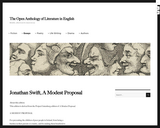
This edition is derived from the Project Gutenberg edition of A Modest Proposal.
- Subject:
- English Language Arts
- Material Type:
- Reading
- Provider:
- The Open Anthology of Literature in English
- Author:
- Jonathan Swift
- Date Added:
- 07/10/2017

This edition is derived from the Project Gutenberg edition of A Modest Proposal.
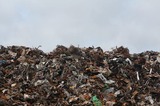
Food waste is a major contributor to greenhouse gas. Wasted food and the resources to produce that food are responsible for approximately 8% of global greenhouse gas emissions. In this storyline, students learn about the resources required to produce food through following the carbon cycle and discover how food waste contributes to climate change. They will also learn the farm to table transport chain as well as how to conduct a food waste assessment. Finally, the students will research solutions to the problem of food waste and, as a final project, present one solution that they have thoroughly researched that can be applicable to their community. For CTE teachers, this storyline provides the basic knowledge needed to develop a deep understanding of WHY reducing food waste is an important solution to climate change. There are several potential extensions that Family Consumer Science teachers can utilize as well as Ag teachers and even Business teachers. There is a partial list at the end of the learning progressions.

The goal of the high school carbon sequestration in forests storyline is to build on the science of carbon sequestration from the middle school storyline. In this storyline, carbon sequestration refers to the removal of carbon (in the form of carbon dioxide) from the atmosphere through the process of photosynthesis. Carbon storage refers to the amount of carbon bound up in woody material above and below ground. High school students will develop an understanding of the variables and considerations that arise from managing forests for different purposes including carbon sequestration and other ecosystem services.
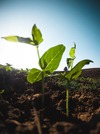
Students will be learning about the practices of regenerative agriculture and how regenerative agriculture is a solution to climate change. Embedded in the storyline are scientific concepts relating to carbon cycling and soil microbial activity. The storyline culminates with students creating an infographic that is intended for educating the community about regenerative agricultural practices.

Solar energy in the form of light is available to organisms on Earth in abundance. Natural systems and other organisms have structures that function in ways to manage the interaction with and use of this energy. Using these natural examples, humans have (in the past) and continue to design and construct homes which manage solar energy in passive and active ways to reduce the need for energy from other sources. In this storyline, students will explore passive and active solar energy management through examples in the natural world. Students will use knowledge gained to design a building that maximizes the free and abundant energy gifts of the sun.
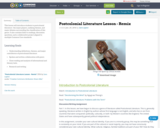
This lesson will introduce students to postcolonial literature--the major players, unifying themes, and major debates surrounding the classification of this genre. It also contains links to readings, discussion questions, and a collaborative project aligned to multiple Common Core standards.

A guide to a University course, including assessment rubrics, where students produce a research-based (OER) podcast. Taught at the University of Leeds by Antonio Martínez-Arboleda.
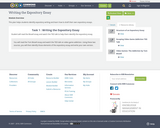
This plan helps students identify expository writing and learn how to draft their own expository essays.